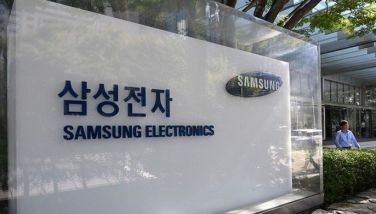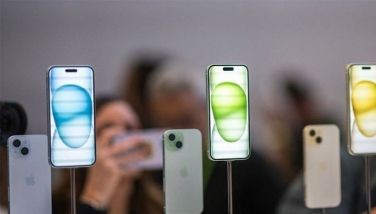The next interface moment in computing could be chip implants
MANILA, Philippines – The next big thing in computing could be a glass-encased chip embedded under the skin of your left hand.
Think of it as an extension of the wearables that can track your movement, your sleep, your heart and pulse rate now. Chip implants can do so much more.
In its early stages today, it can store data that can be read by Near Field Communication (NFC) readers. Technically speaking you can open your door, your car just by scanning your hand in the NFC reader. It can serve as your key or access pass to the gym, the library, the office, or wherever is it that requires identification.
If you think that chips embedded in the human body can turn you into a cyborg, fear not because the reality is less frightening than that, according to Hanness Sjoblad, Chief Disruption Officer and Founder, BioNyfiken.
In a presentation entitled “Chipping Humans: The Internet of Things Becomes the Internet of Us,” at the Kaspersky Lab APAC Cyber Security Summit in Malaysia recently, Sjöblad, along with Rainer Bock and Sergey Lozhkin of Kaspersky Lab, explained that while still a rarity (only around 10,000 people around the world have chips implanted in their hand), it is fast gaining attention, especially in Europe and the US.
The use cases are built around the ease and convenience of not having to carry around too many things in your wallet or your handbag. Just scan your hand and you’re good to go.
Sjoblad said there were many interface moments in computing history that made human interaction with computers a lot simpler. Using computers before Windows, for example, is an absolute pain. It’s the same way with using the Internet before the Web browsers. Windows and Web browsers are only some of the landmarks in computer interfaces that have made it very easy for people to interact with computers.
“My personal take is that implants represent a similar interface moment between humans and technology because of the rise of the Internet of Things (IoT),” Sjoblad said. “Our world will be filled with connected things. If you have a smart device in your hand you have automatic way to interact with technology.”
Defined as the network of physical objects embedded with software, sensors and connectivity, IoT is indeed growing rapidly. Juniper Research recently reported that the number of IoT connected devices is on track to reach 13.4 billion this year and is expected to rise to 38.5 billion by 2020. These connected things have varied applications in retail, agriculture, smart buildings and smart grid applications, to name only a few.
Not yet very smart yet, but getting there
Chip implants are used today mostly as identification devices functioning the same way as fingerprint readers, biometrics, retina scanners, or voice recognition technology. It makes it easier for machines to identify people. They are not, however, very smart or very private yet. Other people can read what is in it.
“Chips have capabilities of storing data and that data could be stolen,” Sjoblad said. “This is what we’ve learned. Never put passwords in your chip implants.”
The chips also do not have batteries and can’t send out signals of their own. They are not very powerful but are relatively easy to embed and easy to take out as well.
Sjoblad, however, said that it could be the beginning of a very interesting technology use. Next generation smart chip implants could provide not only quick digital identification but also health monitoring, payment and transaction verification and digital logins and encryptions.
This is why even this early, Kaspersky Lab is interested in the technology. When the use cases get more varied and more complex and adoption becomes more pervasive, issues on security and privacy are expected to surface.
“In the future, these can be threats that can be mitigated by preparation,” said Bock. “There are a lot of social engineering tricks around.”
Currently, embedding a chip in your hand is classified as ‘body modification,’ according to Ronny Needles of Spec Body Art who demonstrated how the chips are embedded at the summit. Thus, it requires no health or legal supervision. Think of it as similar to getting a tattoo or have your ears pierced.
He doesn’t, however, recommend a ‘do-it-yourself’ approach to embedding the chips, which could be bought online for around $90. You can have it professionally embedded under the skin of your left hand for around $50-$100. Then you download an NFC reader and the another app to customize what your chip can do for you.
Biohacking or the intersection of biology and technology still have a long way to go and may just be part of our sci-fi dreams. But there are people out there who do have embedded chips already in their hands. They are not cyborgs, just people who are more adventurous and ahead of the curve.
- Latest





























